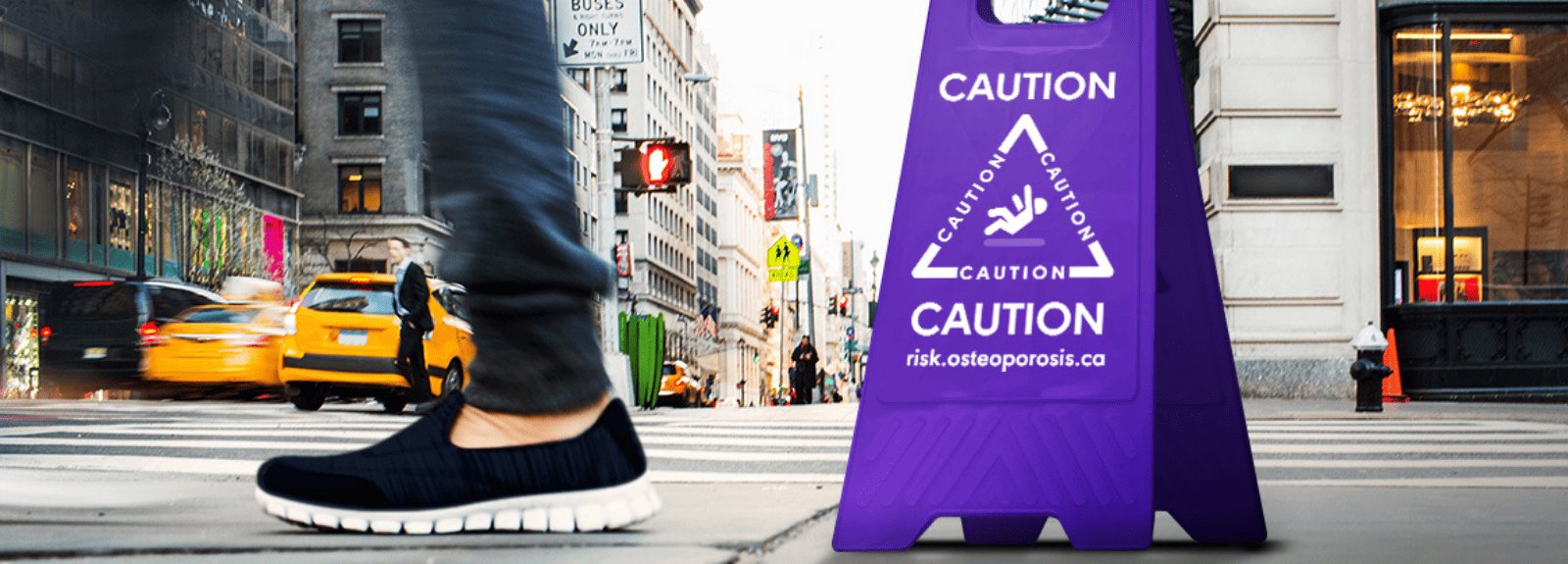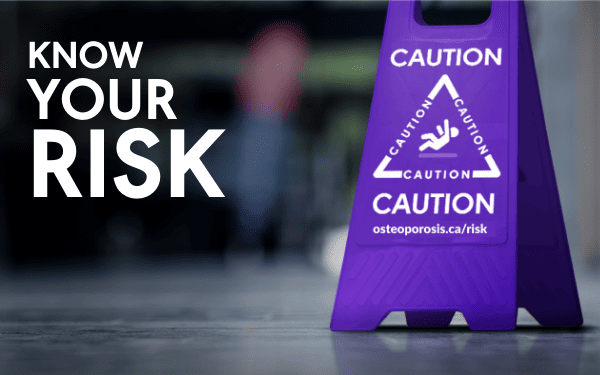
Risk Factors
At least 1 in 3 women and 1 in 5 men will break a bone from osteoporosis.
Did you know?
Fractures from osteoporosis are more common than heart attack, stroke and breast cancer combined.
The risk of having a major fracture from osteoporosis in Canada is among the highest in the world – in the top quarter. Each year 30,000 Canadians break their hip, and this is just the tip of the iceberg. Many more Canadians suffer osteoporotic fractures of the spine, wrist, shoulder and pelvis.
Risk factors include age, sex, vertebral compression fracture, fragility fracture after age 40, either parent has had a hip fracture, >3 months use of glucocorticoid drugs, medical conditions that inhibit absorption of nutrients and other medical conditions or medications that contribute to bone loss.
Over 80% of all fractures in people over 50 are caused by osteoporosis and at least one in three women and one in five men will suffer a broken bone from osteoporosis during their lifetime.
Age
Age is important when it comes to your risk of osteoporosis. As women approach menopause, bone loss occurs at an increased rate. Men start to have increased bone loss at 65+. Fracture risk increases with advancing age.
Calcium Intake
If the body is not getting enough calcium through diet, it begins taking calcium from bones to serve all the other functions it is needed for. This can result in a negative calcium balance, which is not good for bone health. If you are not able to get enough calcium through your diet, you may need to consider adding a calcium supplement. Consult your healthcare provider for more information.
Physical Activity and Exercise
Exercise is an important step towards protecting your bones, as it helps protect your spine, slows the rate of bone loss, and builds muscle strength, which can prevent falls.
Cigarette Smoking
In addition to numerous other health risks, smoking can have a negative impact on bone health.
Family History
Having a strong family history of osteoporosis is associated with an increased risk of developing osteoporosis. Having a parent who has had a hip fracture means, you may be at higher risk of developing osteoporosis and having a fracture.
Note: Osteoporosis and Osteoarthritis are often confused since both begin with “osteo”. Osteoporosis is a bone disease and Osteoarthritis is the most common form of arthritis (joint disease).
Medical Conditions
Some medical conditions are associated with an increased risk of osteoporosis, known as secondary osteoporosis. Some of them can also increase the risk of falling, resulting in broken bones. Examples include rheumatoid arthritis, celiac disease, gastric bypass surgery, COPD (chronic obstructive pulmonary disease) or chronic liver disease.
Sex
While osteoporosis affects both men and women, lowered estrogen after menopause in women increases the risk of osteoporosis. One in three women and one in five men will break a bone due to osteoporosis.
Vitamin D Intake
Vitamin D helps build stronger bones by increasing the absorption of calcium. Some individuals may need higher doses than recommended due to issues with poor absorption or other risk factors/conditions associated with vitamin D insufficiency. Consult your healthcare provider for more information.
Alcohol Consumption
Research shows an increased risk of osteoporosis for those who regularly consume 3 or more alcoholic drinks per day. Increased alcohol intake also contributes to increased risk for falls and is often associated with poor nutrition.
Height Loss
Height loss can be a warning sign of a spine fracture. You may not be aware of a broken bone in your back because 66% are painless. So, knowing how tall you are and having your healthcare professional measure you annually is important if you are over 50 years old.
Medications
Long-term use of certain medications can increase bone loss and as a result increase the risk of fracture. Some medications increase the risk of falls resulting in broken bones. Osteoporosis that results from the treatment of another condition is called Secondary Osteoporosis.
History of Falls
A history of previous falls is one of the best predictors of a future fall. If you have osteoporosis, you are more likely to break a bone if you fall. A previous fall increases the risk for another fall threefold.

KNOW YOUR RISK
Complete the Know Your Risk quiz to find out what your risks are, and make an appointment to talk to your doctor about your bone health and risk of breaking a bone today.

SECONDARY OSTEOPOROSIS
Medications and medical conditions that can increase the risk of osteoporosis and osteoporotic fractures either by causing more thinning of bones, by increasing the risk of falls or both.